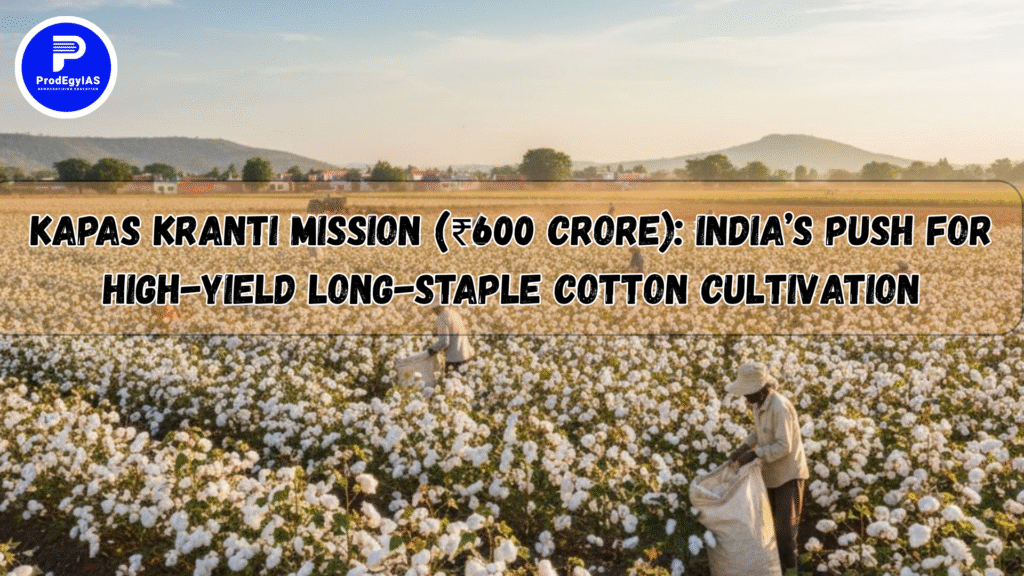
The Government of India launched the ₹600 crore Kapas Kranti Mission to transform India’s cotton sector. The initiative aims to promote high-yield and long-staple cotton cultivation through modern agricultural practices, farmer training, and digital integration. The mission is expected to uplift rural incomes, strengthen India’s textile supply chain, and reduce dependence on imported cotton.
Objectives of the Mission
The Kapas Kranti Mission focuses on modernizing cotton cultivation and improving productivity through a scientific, farmer-centric approach.
Key goals include:
- Promoting High-Density Plantation (HDP) techniques for higher yield per hectare.
- Encouraging the use of superior seed varieties and efficient water management systems.
- Strengthening digital procurement and price transparency through mobile-based apps.
- Supporting long-staple cotton production to boost exports and reduce import dependence.
This mission seeks to position India as a global hub for premium cotton aligned with the broader vision of Atmanirbhar Bharat.
Strategic Significance
Cotton sustains millions of Indian farmers and supports the textile industry, which is one of the largest employment generators in the country.
The mission is expected to:
- Enhance India’s global competitiveness in the textile value chain.
- Bridge the gap between agriculture and industry by integrating cotton farming with advanced textile production.
- Support the government’s goal of Make in India, emphasizing self-reliance and sustainability.
Implementation Framework
The Kapas Kranti Mission will be rolled out across major cotton-growing states such as Maharashtra, Telangana, Gujarat, and Madhya Pradesh.
Major components include:
- Launch of the Kapas Kisan App to connect farmers directly with procurement centers.
- Establishment of new ginning and storage infrastructure to improve supply chain efficiency.
- Training programs and field demonstrations on modern cultivation and pest management.
- Introduction of climate-resilient seed varieties through agricultural research collaborations.
Challenges Ahead
While the mission’s potential is immense, several challenges remain:
- Limited awareness among small farmers about HDP techniques.
- Inadequate rural infrastructure and delayed procurement payments.
- Vulnerability of cotton crops to climate change and pest attacks.
- Need for consistent policy and financial support to maintain farmer confidence.
Addressing these challenges will be vital for the mission’s success and sustainability.
Way Forward
To maximize the impact of the Kapas Kranti Mission:
- Encourage Public-Private Partnerships (PPPs) for research and capacity building.
- Integrate the mission with schemes such as PM Fasal Bima Yojana and Textile PLI for holistic development.
- Provide interest-free loans and incentives for small farmers to adopt new technologies.
- Strengthen export facilitation and quality control to capture global textile markets.
The Kapas Kranti Mission represents a landmark step in reshaping India’s cotton economy. By fusing innovation, sustainability, and farmer empowerment, it aims to make India self-reliant in high-quality cotton production. If implemented effectively, this ₹600 crore initiative could become a cornerstone of India’s agricultural and industrial transformation—linking fields to factories and farmers to global markets.
UPSC General Studies Paper Preparation
| Topic | |
| UPSC Syllabus | UPSC Free Notes |
| UPSC Optional Subjects | Khushhali Solanki (AIR 61, UPSC CSE 2023) |
Public Administration Optional Exam Preparation
Topic | |
About the Author: Jyoti Verma



